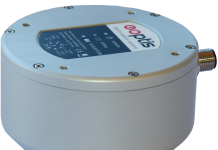Effect of three different yeasts on cocoa fermentations and on sensory characteristics of chocolate
Fermentation of the beans is essential for removing the pulp that envelops the beans, and developing precursors of chocolate flavour. This process is carried out by several micro-organisms, but the role of yeasts is essential for the development of chocolate characteristics. The use of starter culture for better control of the fermentation of cocoa beans has been proposed by several researchers; however the studies available on this theme present some limitations. A group of Brasilian researchers (Batista et al., 2015), in a recent study, performed tests on cocoa beans during spontaneous and inoculated fermentations; they inoculated three yeast species (Saccharomyces cerevisiae, Hanseniaspora uvarum e Pichia kluyveri), and evaluated their effects on the sensory quality of chocolate. The population dynamics of microbes have been evaluated using the so called quantitative real-time PCR (qPCR). The results showed that the concentration of S. cerevisiae was predominant in both fermentations (spontaneous fermentations approx. 5.5 log cell/g and inoculated fermentations approx. 7.2 log cell/g). On the contrary, it was observed that the population of H. uvarum was inhibited by the presence of the other yeasts, since its concentration did not exceed 4.0 log cell/g, irrespective of the type of fermentation. Carbohydrates were consumed faster in the inoculated fermentation (68% at 24 h) than in the spontaneous fermentation (42% at 24 h). As expected, the ethanol concentration in the pulp was lower in those two samples (4.6 g/kg at 96 h) compared to those inoculated with three yeasts (8.3 g/kg at 96 h). For the sensory acceptance, no significant differences were detected between the two samples of chocolate. As for the taste, the chocolates produced with inoculated samples were more related to coffee and sour attributes than those those produced by spontaneous fermentation. In conclusion, the authors suggest that additional studies are necessary to investigate the influence of inoculation on volatile compounds produced by fermentation and, hence, in chocolate.
Method for tracing allergens in chocolate by DNA extraction protocols
The number of consumers affected by food allergies is constantly rising, and recent estimates indicate 5% of adults and 8% of children. For example, almonds and nuts are responsible for several particularly dangerous reactions for this category of persons. In this respect, a recent study, conducted by a group of Portuguese researchers (Costa et al., 2015), compares the performance of different molecular techniques based on different DNA extraction methods, for tracing the presence of almond and nut allergens in complex matrices, like the chocolate matrices. The extraction protocols used were: CTAB–PVP (cetyltrimethylammonium bromide–polyvinylpyrrolidone), method with and without RNase, PVP method with and without RNase, and the Nucleospin kits available on the market. The extracts were assessed by qualitative PCR and real-time PCR. Results showed that the Nucleospin protocol was the most reliable to trace the presence of allergens in chocolate, both for almonds and nuts. By high efficiency PCR, this protocol achieves a limit of detection of 0,005% (w/w), with a linear response. In conclusion the authors highlight that sensibility, key parameter for determining the presence of allergens in complex food matrices, is strongly dependent on the DNA extraction method. The studies carried out to date contribute to the development of reliable methods for controlling crossed contaminations along industrial transformation processes. However, more efforts are required to improve DNA traceability, very important for tracing allergens.
References
N.N. Batista et al., LWT – Food Science and Technology, 63, 2015, 221-227
Costa et al., Food Chemistry, 187, 2015, 469-476




